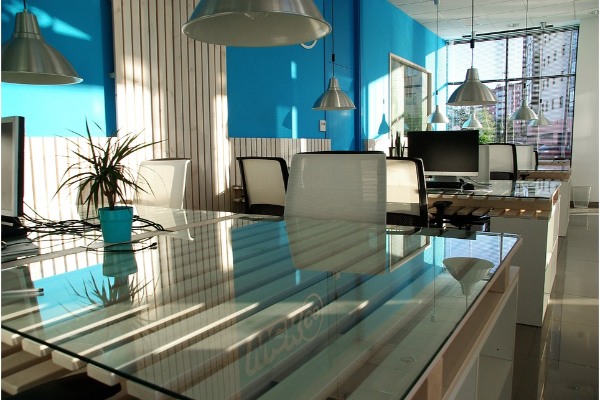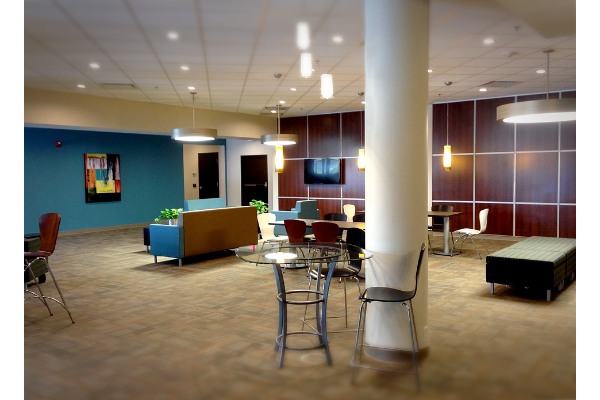During this evolving process, flexible workspaces were created. Despite the fact that this idea is not novel, more businesses are choosing to organize themselves in this way as a result of the current circumstances.
In fact, if we take a closer look at the rise in teleworkers in general, but especially in the wake of the lockdown situation experienced at the start of 2020, we can definitely understand why some businesses may want to reorganize their workplace. As a result, this evolution is taking place in tandem with the demands of the current workforce, who may not share the same expectations as their predecessors.
What Is A Flexible Workspace?
Flexible workspaces are offices with various desk arrangements and collaborative hubs that are outside the traditional office working realms. They are also referred to as serviced offices. Part-time employment, compressed workweeks, telecommuting, remote work, and flexible scheduling are examples of this.
For some employees, such as parents or caregivers who needed to make the school run or work from home, flexible working used to be a perk. After the advantages of flexible working were discovered, it then evolved into a benefit provided by a number of progressive businesses prior to COVID-19.
Since the pandemic, however, our perception of traditional offices has changed, and it has been demonstrated to business owners that work can be done remotely to an equal or higher standard. Due to the increase in remote working that has resulted, there are now fewer people working in offices, which reduces the need for office desks. Flexible office spaces can be useful in situations like these.
When you use a flexible workspace, your only concern is the desk space you actually use. The office spaces are fully equipped with all the tools you could possibly need for work, including WiFi and, in some cases, computers and hardware.
What Makes A Workspace Flexible?
In order to maximize productivity, flexible working arrangements give employees a variety of options, such as working from home or remotely, unconventional office hours, and alternative locations in the office. These workers are happier and more effective because they have greater job satisfaction because are not required to adhere to rigid hours or spaces.
There are a variety of ways to achieve this goal of making your office space physically flexible. One strategy is to designate areas around the office based on the level of activity or activity-based working. Examples include designated areas for collaboration, tranquil areas, or gathering places.
Multi-purpose furniture and spaces are another strategies for creating flexible workspaces. The most widely used example of this technique is standing desks, which still allow employees to have a dedicated area while facilitating their mobility. Alternative office chairs with cutting-edge designs and ergonomic comfort include the BeYou Chair and Turnstone Buoy.
Types Of Flexible Workspaces
Depending on the requirements of your company and its size, there are various types of flexible offices to meet your needs. For instance, hot desks are extra desks scattered throughout the office that in-house, remote, and temporary employees can use.
Coworking Spaces
Hot desks are enhanced by coworking spaces. Workers from various companies are able to coexist in this office space. The coworking space managers will offer the residents shared infrastructure and substantial office rent savings.
Open Offices
By eliminating the division and segregation that are often felt in cubicle spaces, open offices allow for a more traditional office layout. Longer desks typically occupy less room and can accommodate more workers. However, in order to take advantage of flexible spaces, the desks should still be arranged dynamically and perhaps include activity-based workspaces.

Benefits Of Flexible Workspaces
Saving Money
Because not every employee requires a desk, computer, and other equipment, a flexible work environment can lower the overhead costs your company bears. With hybrid workers, you can have a larger workforce without having to find space for every employee every day by having an open floor plan or unassigned seating that allows them to come and go as they need.
Happier Employees
Happy workers are more productive and motivated to stay in their jobs. Giving your employees the freedom and flexibility to choose how they want to work and how they want their surroundings to look will help them be more productive.
Employees can interact with one another by moving around the office, whether or not they are from the same department. More connected coworkers collaborate more effectively, which improves communication and fosters a sense of camaraderie.
Flexible workspaces have a positive effect on employees’ physical health as well. Because movement is encouraged, there is a lower chance of suffering musculoskeletal injuries. Other advantages of flexible office space over a sedentary workplace include better posture, lower risks of diabetes and cardiovascular disease, and fewer ergonomic injuries. Less time off for hospitalization and sick days are associated with better health, which also increases employee satisfaction.
Attract And Retain Talent
Thanks to recent technological advancements, working from home and hybrid employees were on the rise even before the pandemic in 2020. Talented workers can work effectively and efficiently from a distance, and many employees appreciate the freedom from commuting and conventional offices. In this day and age, flexibility is essential for both hiring and keeping employees.
Although some employees may still feel cut off from the company if they work remotely too frequently, this does not mean you have to completely abandon the office setting. However, a multipurpose, flexible office setting encourages workers to come in and interact with one another, forging bonds and fostering positive working relationships. If you have entirely remote employees, organizing virtual team-building exercises is another option.
In the long run, your business will benefit from your employees’ needs being met because they will be more productive and less likely to take time off of work to relax. You can save time and money during transitions and get people who are well-versed in your business and capable of doing the best work when you can not only recruit but also retain employees.
New Ways Of Working
Flexible space can serve as a testing ground for new working methods for organizations. The trial of a new layout stands out as one option. Workbar and other flexible workspaces have embraced the activity-based working model, which divides up the workspace into different zones for various types of work. It has been demonstrated that this model boosts well-being and job satisfaction. Beyond the advantages for those who use the space, providing contemporary layouts can also draw talent.
Additionally, adaptable spaces can result in organizational transformation. They offer a great setting to purposefully design and test a new culture because they are physically isolated from the rest of an organization. Then, by employing strategies like rotating teams, this culture can be transferred back to the parent organization.

Greater Innovation
Flexible spaces are excellent for fostering innovation within a company. Organizations can increase their exposure to various ideas and ways of thinking by sharing space with startups, independent contractors, and other businesses. By choosing a flexible space on purpose based on the current occupants, an organization can maximize the chance for such cross-pollination.
Therefore, how is this kind of cross-pollination possible? One method involves chance meetings in coffee and kitchen areas. However, organizations shouldn’t rely solely on luck. There are ways to encourage the exchange of ideas on purpose. Hosting hackathons with participants is one strategy. Another is for community managers to link up with related residents.
Flexible Contracts
Flexible offices let you move in immediately and easily reduce or increase your space based on your current headcount. This also means that you can maintain flexibility with much shorter contracts than a typical office lease and budget appropriately thanks to an all-inclusive cost.
Having this level of flexibility is essential for startups who don’t know how many employees they will have in six months because it allows them to grow their teams or reduce them if necessary.
Even larger and more established businesses, however, may value this degree of adaptability given the COVID-19 uncertainty. Short-term rolling contracts are an option that may provide some assurance.
Increasing Employee Interaction And Productivity
Employees will be able to interact more with one another by creating shared space and having more open offices, which is thought to increase the flow of ideas as long as there are interactions. As Yahoo’s human resources director put it so well: “Conversations that take place in the cafeteria or hallways can lead to some of the best decisions and ideas.” You give your employees many chances to come up with innovative ideas by allowing them to talk in chairs that are in the center of the workspace. This is advantageous for the business. Your staff will have the opportunity to interact with people they wouldn’t typically meet thanks to this flexible work environment.
According to a study by Dr., this reorganization of space can also increase employee productivity. van der Voordt from the Technical University of Delft. The proportion of employees at a company who believed that their working environment affected their productivity rose from 14% to 51% after the redesign. This indicates that as a result of the company’s change in the environment, 37% of clerks saw an increase in their productivity. Given that productivity and performance are related, this variable is easily noticeable.
A Flexible Rental
The renting of shared workspaces is typically very flexible, so a long-term commitment is not necessary. We want you to use these areas in the ways that best suit your needs. You can set up for some of your employees to work from a coworking space in another city, for instance, if you need to send them there for a short-term assignment.
The way that work is structured is evolving quickly. As today’s workers seek out more and more interaction, this trend will persist. Flexible workspaces are one way to give your staff members these opportunities for interaction.
Final Words
Joining flexible workplaces has benefits for medium-sized and large organizations, from improved agility to increased visibility. Organizations need to look beyond lease terms in order to fully realize these advantages. Additionally, they need to think about the other people using the area and actively try to strike up conversations with them while they’re there.





